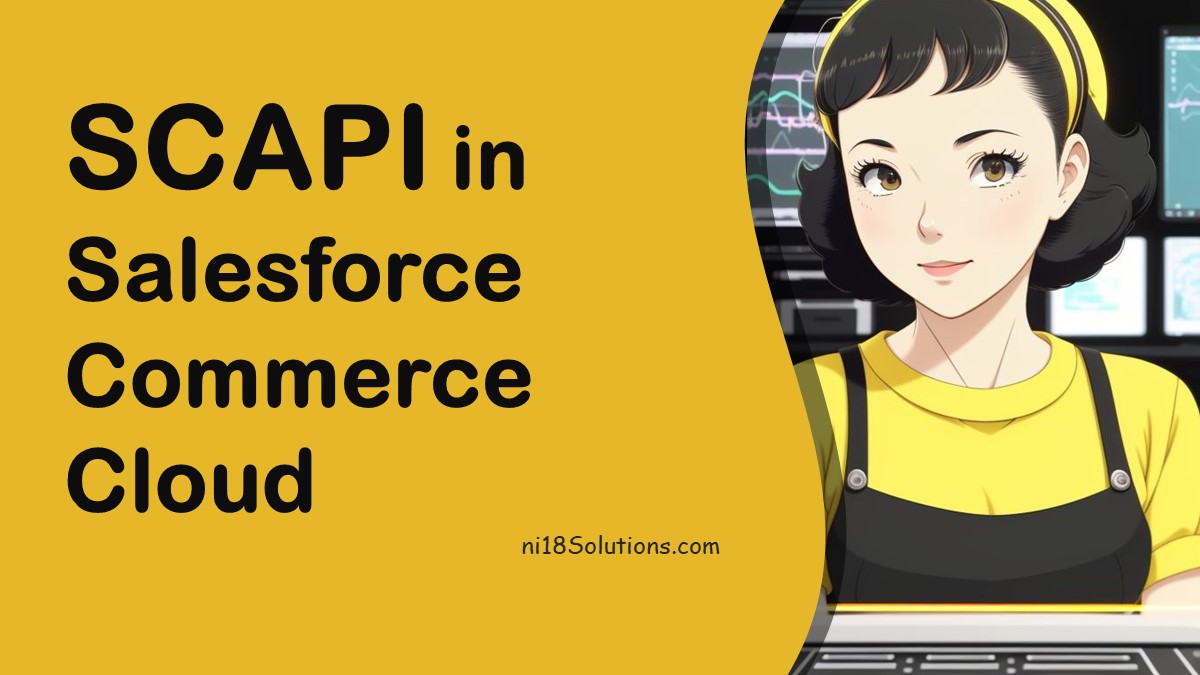Hey there! If you’re curious about what SCAPI is in the world of Salesforce Commerce Cloud (SFCC), you’re in the right place. Let’s dive into this topic in a way that’s easy to understand, no matter your background.
Table of Contents
Introduction to Salesforce Commerce Cloud
First off, Salesforce Commerce Cloud is like a giant toolbox for businesses that want to sell products online. It’s packed with features that help companies create websites, manage products, handle customer orders, and much more. Think of it as a one-stop-shop for all things e-commerce.
So, What’s SCAPI?
SCAPI stands for Salesforce Commerce API. In simple terms, it’s a set of tools that developers use to talk to the Salesforce Commerce Cloud. Imagine you have a remote control (SCAPI) for your TV (Salesforce Commerce Cloud). With this remote, you can change channels, adjust the volume, or turn the TV on and off without getting up from your couch. Similarly, SCAPI lets developers interact with SFCC without having to dig deep into the platform’s internals.
Why is SCAPI Important?
SCAPI is crucial for a few reasons:
- Flexibility: It allows developers to create custom features that aren’t available out of the box in SFCC. This means businesses can tailor their online stores to meet their unique needs and provide a better shopping experience for their customers.
- Integration: SCAPI makes it easier to connect SFCC with other systems. For example, if a business uses a different system for inventory management, SCAPI can help link the two systems so they can share information seamlessly.
- Efficiency: With SCAPI, developers can automate tasks that would otherwise be time-consuming. This can include things like updating product listings in bulk or generating reports on sales data.
How Does SCAPI Work?
SCAPI works by using something called APIs (Application Programming Interfaces). You can think of an API as a waiter in a restaurant. Just as you tell the waiter what you want to eat, and they bring your order to the kitchen and then back to you, an API takes requests from developers, gets the information or action needed from SFCC, and then returns the response back to the developer.
Developers use specific commands (known as API calls) to tell SCAPI what they want it to do. These commands can be as simple as retrieving the details of a specific product or as complex as processing a customer’s order.
Examples of SCAPI in Action
- Product Management: A developer can use SCAPI to add new products to the store, update existing product details, or delete products that are no longer available.
- Order Processing: SCAPI can be used to create new orders, update order statuses (like marking an order as shipped), and handle returns or exchanges.
- Customer Interaction: Through SCAPI, developers can manage customer accounts, including creating new accounts, updating customer information, and handling customer inquiries.
Advantages of SCAPI:
- Integration Flexibility: SCAPI enables seamless integration with external systems, such as CRM platforms, payment gateways, and marketing tools. This integration capability allows for a more connected and efficient e-commerce ecosystem.
- Customization Opportunities: With SCAPI, developers can create custom functionalities tailored to specific business needs. This customization empowers businesses to deliver unique and personalized experiences to their customers.
- Enhanced Automation: SCAPI facilitates automation of various processes within the e-commerce environment. Tasks like order processing, inventory management, and customer data synchronization can be automated, saving time and reducing manual errors.
- Scalability and Performance: By leveraging SCAPI, businesses can scale their operations effectively. The API’s architecture is designed to handle increased loads and ensure optimal performance, even during peak traffic periods.
- Data Accessibility: SCAPI provides easy access to critical data stored within Salesforce Commerce Cloud. This accessibility allows for real-time data retrieval, analysis, and reporting, empowering businesses to make informed decisions quickly.
- Cross-Channel Consistency: SCAPI helps maintain consistency across multiple sales channels. By centralizing data and operations through APIs, businesses can ensure a uniform brand experience for customers across various touchpoints.
- Enhanced Customer Experience: Through SCAPI, businesses can implement features like personalized recommendations, targeted marketing campaigns, and streamlined checkout processes. These enhancements contribute to an improved overall customer experience.
- Security and Compliance: SCAPI adheres to industry standards for security and compliance. By using secure API endpoints, businesses can protect sensitive data and ensure regulatory requirements are met.
Conclusion
SCAPI is a powerful tool in the Salesforce Commerce Cloud toolbox. It gives developers the ability to customize and enhance the e-commerce experience, making it possible for businesses to meet the unique needs of their customers. Whether it’s adding new products, processing orders, or managing customer accounts, SCAPI plays a crucial role in making SFCC a flexible and efficient platform for online retail.
Remember, while SCAPI might seem complex at first, it’s essentially about making connections and automating tasks to make the lives of developers, businesses, and ultimately customers, a little bit easier.
SCAPI- https://developer.salesforce.com/docs/commerce/commerce-api/overview
